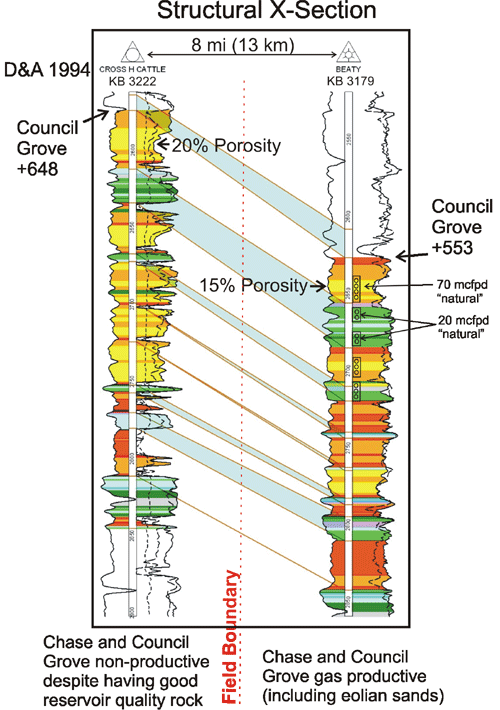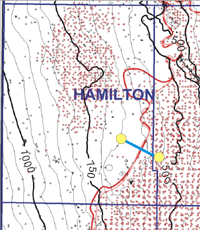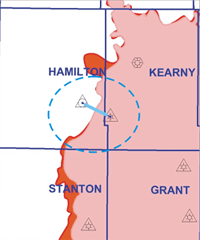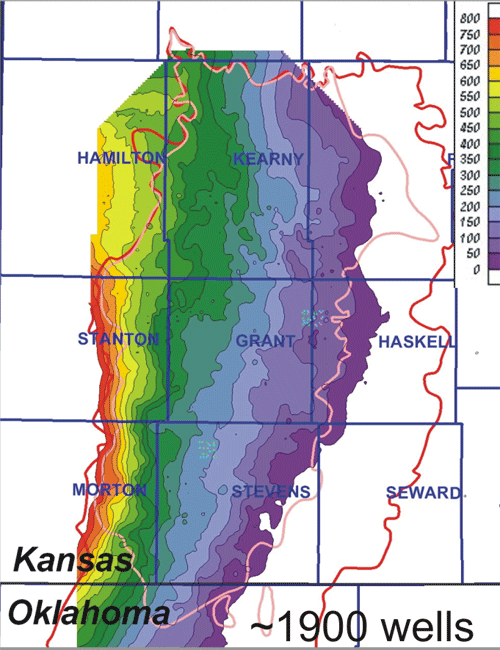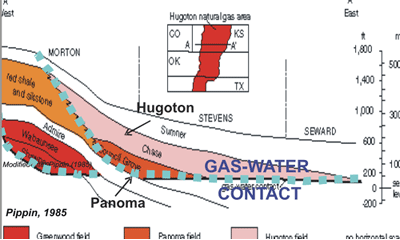Two cored wells straddling the Panoma Field boundary show that though the margin is coincident with thinning or absence of the marine carbonates, continuous eolian sandstones with relatively high reservoir quality straddle the field boundary. These sands are gas pays in the field but in an updip position outside the field are non-productive and water bearing.
Earlier workers recognized that the Hugoton Gas-Water (G/W) contact is not constant and rises dramatically on the west edge of the field. Dubois and others (2004) suggested that the Chase and Council Grove have a common G/W contact and free water level (FWL) throughout most of the field and that the FWL is continuously sloped.
To explain the trap and sloped G/W contact, Hubbert (1953) invoked a hydraulic gradient connected to the Rocky Mountain front range and a permeability barrier at the field margin. Pippin (1970) cited Hubbert’s work along with updip facies changes, and Olson (1997) invoked fault bounded compartments with separate, flat G/W contacts and updip facies changes for explaining the geometry.
Our work suggests that facies changes are not the trapping mechanisms in the continental sandstone reservoirs. Further work is needed to demonstrate that there are no physical barriers such as faults or capillary pressure differences that cause the phenomenon that we have observed.
http://www.kgs.ku.edu/PRS/AAPG2005/2005-25/p3-03.html
Last Modified November 2005
![]()
